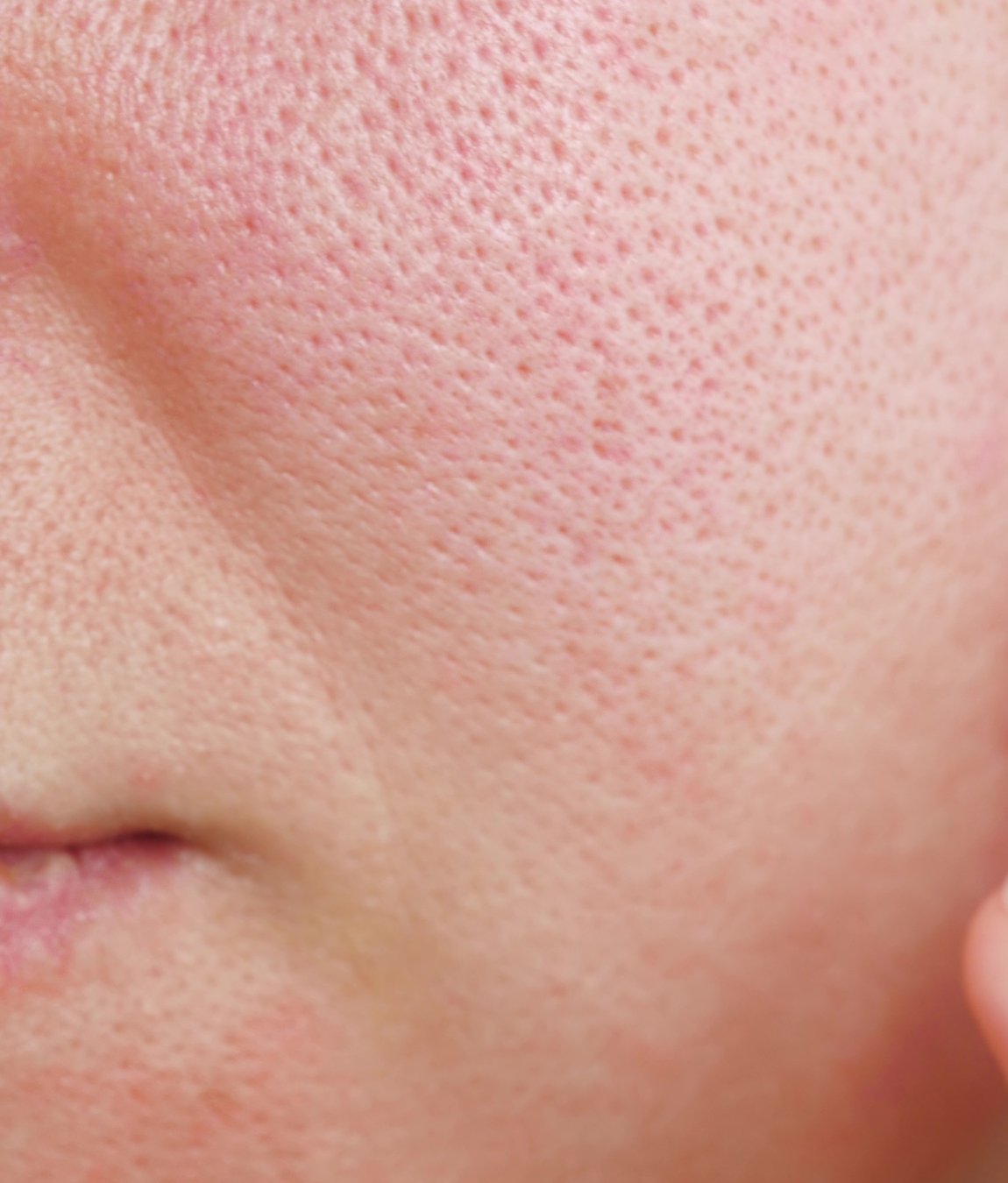The Truth About Pores: Myths, Facts, and How to Minimise Them
If you're here for "glass skin," you might leave disappointed – you’re not a window. Your face isn't meant to be poreless.
However, if you want to better understand why some of us are prone to more enlarged pores or pores that are much more visible than we’d like, this blog offers a guide on how to keep them clean and make them less obvious.
Our August blog includes information on professional treatments and home-based tips for addressing this issue.
Find FAQs about large pores below.
common causes for large pores:
✔️ Genetics: Inherited genes play a significant role in pore size. If your parents had larger pores, chances are you will too. Many people with larger pores also experience more oil flow, making oily skin and larger pores a common combination.
✔️ Gender: On average, men tend to have larger pores than women. However, women who have very oily skin or experience hormonal changes due to menstruation, pregnancy, or menopause can also experience the development of larger pores on the nose, chin and cheeks during these periods.
✔️ Age: Pores naturally enlarge as we age due to reduced collagen production, causing less firm and elastic skin, and resulting in wider pore appearance.
✔️ Sun exposure: The Sun may feel nice on your face but it’s rays can be harming your skin invisibly. Specifically, UVA rays can cause sun damage and break down the collagen in your skin, making it less elastic. When your skin loses elasticity, your skin can sag and make your pores appear larger.
What can I do at-home for large pores?
You can target enlarged pores at-home with simple steps like good cleansing practices, the use of clays and targeted acids or enzymes.
Here are some brief details on these three essential steps.
Keep it clean : Regular cleansing practices.
Regular, consistent, and thorough cleansing practices (that are suitable for your skin type) can offer a great way to lift excess oil, makeup, SPF and dead skin cells that can clutter up the skin’s surface and contribute to “plugs” forming within the pores. A simple step made even more effective with a good textured flannel for a touch of gentle exfoliation.
Targeted acids : Gentle chemical exfoliation
I normally prefer chemical exfoliation via products that contain lactic acid, salicylic acid or even fruit-derived enzymes. Although the word ‘acid’ can sound a bit harsh, these acids are weak and can help gently dissolve the ‘glue’ that holds dead skin cells to the surface. The removal of this debris can make the skin appear smoother, refining the look of the pores. Best used sparingly throughout the week. You can find our guide to exfoliating acids here for more information.
Whisk away excess oil : Use a clay-based mask
Is your skin greasy halfway through the day? If your skin is producing too much oil, you can use a clay-based mask (look for kaolin or bentonite on the back of your product) to the area most affected by shine. This type of product can quickly absorb excess oil, reduce shine, and make enlarged pores less visible. Best used 1-2 times a week, leave on for no longer than 10-mins to avoid dehydrating the skin.
For a more symbiotic effect, I enjoy the Alumier MD Refining Clay Mask as this includes gentle enzymes to soften and resurface the skin, salicylic acid to dissolve congestion and clays to absorb excess oil. If you can’t tolerate exfoliating acids, a cheap clay mask will do the trick.
Quick guide: Things you can do at-home.
This summary includes good skincare practices, many of which you may be aware but certainly worth reiterating.
Keep your face clean by cleansing it regularly.
Utilise a gentle exfoliating acid or enzyme product to refine the pore-size.
Drink plenty of water to keep your skin hydrated.
Use a hydrating serum. Well hydrated skin can naturally shed excess cells, reducing surface and pore build-up.
Use sunscreen to protect your skin. Sun damage makes your skin less firm.
Use a clay mask weekly if you’re especially oily.
Things you can’t do at home : A professional treatment guide.
Below are some of my favourite treatments to reduce the appearance of enlarged pores.
Kick-start collagen production
As mentioned above, the loss of collagen and elastin within the skin can make the pores look more slack and wide, which is why a treatment focused on boosting collagen could be a good solution for this concern. A few of my favourites at the studio are skin needling or microneedling, as well as an energy-based treatment like radiofrequency.
Each of these treatments can offer an initial benefit but are best appreciated over subsequent months as the skin generates new collagen in response to the treatment-induced trauma, resulting in further improvements and ultimately smaller, more refined pores.
A Deep Cleansing Facial
A pore that is filled with debris will appear more stretched and dilated, which is why getting a professional facial can effectively clear out your pores, leaving your skin looking fresher and clearer.
Deep cleansing usually involves gentle steaming, not to open the pores (they don't work like garage doors) but to soften the trapped oil. Softened blackheads are then extracted, either through gentle squeezing or with the help of a tool.
For those with recurring skin buildup, scheduling this treatment every 4-6 weeks offers a beneficial "reset" for your skin.


